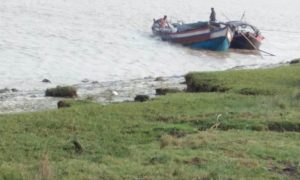Terror history, infiltration fears haunt Kendrapara

Kendrapara: In light of the national security situation and rising Indo-Pak tensions following the April 22 terrorist attack in Pahalgam, the Ministry of Home Affairs has instructed all states to conduct mock drills to ensure wartime preparedness. Kendrapara has been included among 12 such locations selected in Odisha, drawing renewed attention to the troubling history of the district.
According to official records and public concern, despite repeated alerts, infiltration by Bangladeshi nationals continues unchecked in Kendrapara. The district administration has reportedly failed to enforce effective surveillance or initiate decisive screening mechanisms to stop the trend. Locals argue that political leniency and administrative negligence have allowed undocumented entrants to integrate seamlessly.
Civil society members including Rabinarayan Pati, Jagadish Pati, Sachidananda Behera, Ganesh Chandra Samal, Sushant Nayak and Radhakanta Mohanty claim infiltrators have acquired Indian identity documents—such as Aadhaar cards, voter IDs and PAN cards—often by producing forged school certificates with local assistance. Absence of robust verification enables their easy assimilation into public systems, they allege.
Due to inadequate infrastructure and personnel at coastal police outposts, sea routes remain poorly monitored. Reports suggest that the infiltrators are entering via fishing vessels and settling in interior regions with little scrutiny. Sources said areas like Mahakalpada, Rajnagar, Rajkanika, Pattamundai and Patkura remain particularly vulnerable for infiltration due to their proximity to sea.
The district’s past lends weight to current concerns. In 2018, the NIA had arrested Habibur Rahman from Delhi Airport — a resident of Miramahala village under Patkura police limits — identifying him as a suspected Lashkar-e-Taiba operative.
Earlier, Mohammad Javed of Ranapada village under Kendrapara Town Police Station limits was arrested in 2007 near the India–Pakistan border on terrorism charges. Following his release from jail in 2010, Javed disappeared, and his current whereabouts remain unknown.
In 2016, Abdul Rahman, allegedly affiliated with Al-Qaeda, was apprehended. Subsequent investigations revealed his association with local individuals and religious institutions, particularly a madrasa in Goudagopa where he is believed to have studied between 1990 and 1995.
Further, the unauthorised operation of a clandestine radio station in Bhitarkanika during that period raised alarm over internal surveillance failures.
Despite these incidents, authorities have yet to establish stringent entry controls or identification drives for undocumented individuals. Analysts warn that during a conflict scenario, extremists may exploit Kendrapara’s weak spots to orchestrate disturbances.
District Fire Officer Prashant Kumar Mohapatra and Additional District Magistrate (ADM) Rabindra Kumar Mallik stated that the district has been placed under high alert following the Pahalgam attack. A full-scale mock drill will be held at 4 p.m. Wednesday, with the participation of civilians, volunteers and educational institutions. Sirens will be sounded from 20 emergency centres to initiate evacuation protocols, and shelters are being readied for potential displacement.
However, with its strategic location and history of oversight, Kendrapara remains a concern amid rising national tensions.
PNN
News